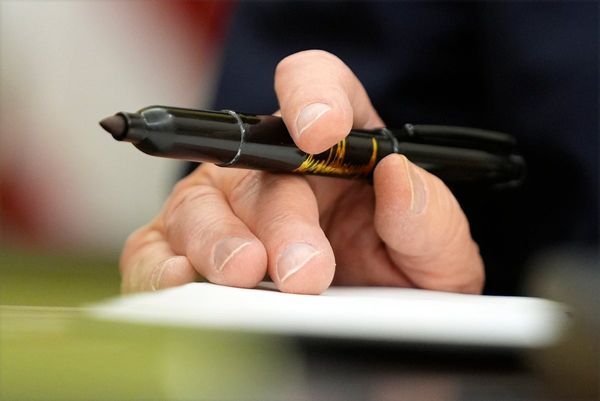
Copenhagen (AFP) - Danes were voting on Tuesday in what promises to be a tight election in which the balance of power could be tipped by which side of the political divide manages to woo the middle ground.
The election was triggered by the "mink crisis" that has embroiled Denmark since the government decided in November 2020 to cull the country's roughly 15 million minks over fears of a mutated strain of the novel coronavirus.
The decision turned out to be illegal, however, and a party propping up the minority Social Democrats government threatened to topple it unless it called elections to regain the confidence of voters.
Grey skies covered the capital as voting stations opened at 8:00 am (0700 GMT).They are scheduled to close at 8:00 pm and the first results are expected around 9:30 pm.
"Climate issues and psychiatry (mental health issues), but mostly climate, are the reasons behind my vote," 46-year-old Lone Kiitgaard told AFP after casting her ballot in central Copenhagen, without disclosing who she voted for.
The latest polls give the left-wing "red bloc", led by incumbent Prime Minister Mette Frederiksen's Social Democrats, 49.1 percent against 42.4 percent for the "blues", an informal liberal and conservative alliance, supported by three populist parties.
Frederiksen got her vote in early at Hareskovhallen, a badminton centre turned voting booth northwest of Copenhagen.
"This election could be really close, and there is a risk that there will be a blue government after today," she said.
After a campaign dominated by climate concerns, inflation and healthcare, almost a quarter of voters were still undecided heading into election day, according to polls.
"There is a fairly high degree of volatility with Danish voters, about 40 percent change parties," Rune Stubager, a professor of political science at Aarhus University, told AFP.
'Moving to the middle'
With neither bloc likely to gain an outright majority, they will be unable to govern without the help of the Moderates, a centrist party founded this year by two-time prime minister Lars Lokke Rasmussen, who is polling at 9.3 to 10 percent.
"That's the most interesting part.If there is no majority, as seems to be the case, the Moderates are required to form a government," said Stubager.
Ronja Gourlay, a 32-year-old social worker, said the fact that both sides were seeking favour with the Moderates made the decision harder.
"It was difficult to make a choice.I feel the parties are moving to the middle," she told AFP after casting her vote.
Both the left and the right have made repeated appeals to Lokke Rasmussen, who has campaigned on reforming the healthcare system.
Frederiksen has floated the idea of a coalition government, led by herself, and has said she is also willing to discuss healthcare reforms.
Liberal Party leader Jakob Ellemann-Jensen has called for Lokke Rasmussen to align with his former party colleagues on the right.
First-time voter Antesa Jensen told AFP she was still hesitant.
"I don't know yet who I'm voting for," Jensen said.
The 40-year-old American has just obtained Danish citizenship after what she described as an exhausting process, highlighting the Scandinavian country's restrictive policy towards foreigners.
'Zero refugee'
Protective of the prosperity and social cohesion of the Nordic welfare state, Denmark championed ever stricter migration policies for over 20 years.
Advocating a "zero refugee" policy, the sitting Social Democrats government is working on setting up a centre to house asylum seekers in Rwanda while their applications are processed.
As most parties back the restrictive policies the issue is rarely up for debate.
Climate, on the other hand, is of great concern to Denmark's 5.9 million inhabitants.
On Sunday, some 50,000 people, including the prime minister, gathered for the "People's Climate March" in Copenhagen.
The left has promised a biodiversity law and the government intends to introduce a carbon tax on agriculture, a measure supported by most other parties.
On the right, the Liberal Party is betting on the development of green solutions, while the far-right "New Right" is open to the construction of nuclear power plants, of which there are none in Denmark.
In total, no fewer than 14 parties are in the running for the 179 seats in parliament.
Four seats are reserved for the overseas autonomous territories: Greenland and the Faroe Islands.
Voter turnout is traditionally high in Denmark.In the 2019 election, 84.6 percent of some 4.2 million eligible voters cast a ballot.







